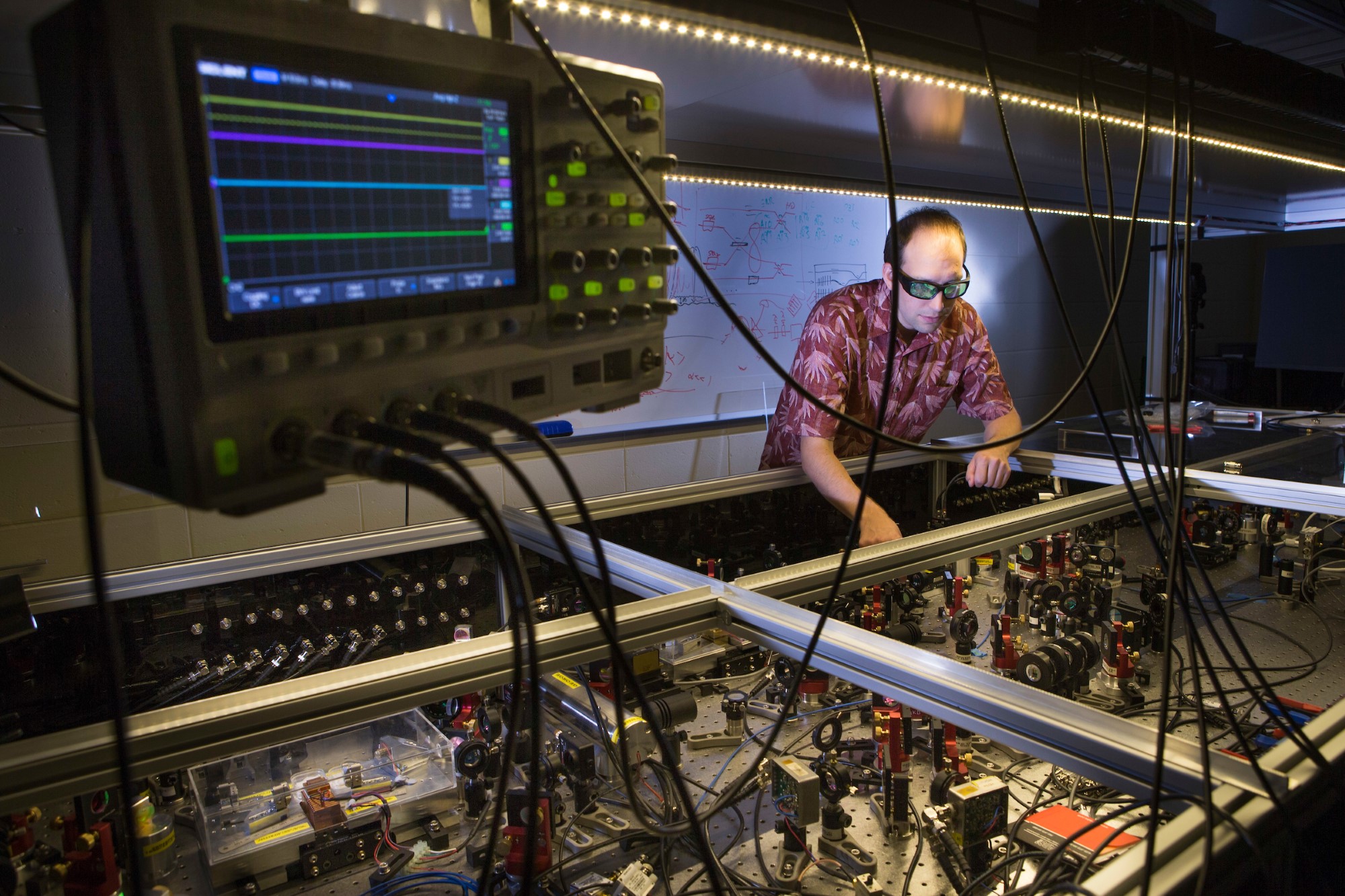
Research projects
Discover the forefront of astronomy and astrophysics through our projects, ranging from deep-space communication systems to groundbreaking adaptive optics. Explore our diverse, ongoing research initiatives shaping the future of space science.
Displaying 106 - 120 of 144 project(s).
This project will simulate observations of the magnetic fields of a Milky Way-like galaxy from a recent, high-resolution simulation. The goal is to identify effective ways to reconstruct the 3D magnetic field geometry of this simulated galaxy using observables projected onto the 2D sky.
Theme
- Galactic archaeology
- Structure and evolution of the Cosmos
Student intake
Open for Bachelor, Honours students
People
- Professor Naomi McClure-Griffiths, Supervisor
This project will simulate observations of the magnetic fields of a Milky Way-like galaxy from a recent, high-resolution simulation. The goal is to identify effective ways to reconstruct the 3D magnetic field geometry of this simulated galaxy using observables projected onto the 2D sky.
Theme
- Galactic archaeology
- Structure and evolution of the Cosmos
Student intake
Open for Bachelor, Honours students
People
- Professor Naomi McClure-Griffiths, Supervisor
In order to further the MAVIS design, an image simulator was built in Python, allowing star catalogs to be fed in, which are used to generate realistic MAVIS images. MAVIS now requires an IFU simulator to be developed, providing realistic IFU images from star catalogs.
Theme
- Instrumentation
Student intake
Open for Bachelor, Honours students
People
- Dr Jesse Cranney, Supervisor
- Dr Trevor Mendel, Supervisor
In order to further the MAVIS design, an image simulator was built in Python, allowing star catalogs to be fed in, which are used to generate realistic MAVIS images. MAVIS now requires an IFU simulator to be developed, providing realistic IFU images from star catalogs.
Theme
- Instrumentation
Student intake
Open for Bachelor, Honours students
People
- Dr Jesse Cranney, Supervisor
- Dr Trevor Mendel, Supervisor
This project will build on work within the Dark-ages, Reionization And Galaxy-formation Observables Numerical Simulation project (DRAGONS).
Theme
- Structure and evolution of the Cosmos
Student intake
Open for Bachelor, Honours, PhD students
People
- Dr Yuxiang Qin, Supervisor
- Professor Stuart Wyithe, Supervisor
This project will build on work within the Dark-ages, Reionization And Galaxy-formation Observables Numerical Simulation project (DRAGONS).
Theme
- Structure and evolution of the Cosmos
Student intake
Open for Bachelor, Honours, PhD students
People
- Dr Yuxiang Qin, Supervisor
- Professor Stuart Wyithe, Supervisor
We will use simulations of the Milky Way to make predictions for SKA.
Theme
- Structure and evolution of the Cosmos
Student intake
Open for Honours students
Observatory
People
- Dr Aditi Vijayan, Supervisor
- Professor Mark Krumholz, Supervisor
We will use simulations of the Milky Way to make predictions for SKA.
Theme
- Structure and evolution of the Cosmos
Student intake
Open for Honours students
Observatory
People
- Dr Aditi Vijayan, Supervisor
- Professor Mark Krumholz, Supervisor
We aim to build an innovative framework to leverage future 21-cm experiments to observe cosmic dawn, and to forecast the optimal constraints on dark matter.
Theme
- Structure and evolution of the Cosmos
You will use new data from the Australian SKA Pathfinder survey, GASKAP-HI to help take the temperature of the Milky Way and Magellanic Clouds. PhD & Masters students on this project will have the opportunity to be among the first users of ASKAP.
Theme
- Galactic archaeology
- Structure and evolution of the Cosmos
Student intake
Open for Bachelor, Honours, PhD students
People
- Professor Naomi McClure-Griffiths, Supervisor
The effective temperature is one of the most fundamental parameters of a star, and its precise determination is crucial for a number of purposes, e.g., from measuring chemical abundances and ages, to improving stellar and atmosphere models.
Theme
- Galactic archaeology
- Stellar and planetary astronomy
M dwarfs are the most abundant stars in the universe, and prime targets for detecting Earth-like planets.
Theme
- Galactic archaeology
- Stellar and planetary astronomy
We have a variety of projects that will use the new GASKAP-HI data to study the structure and temperature of hydrogen in the Magellanic System.
Theme
- Galactic archaeology
- Structure and evolution of the Cosmos
Student intake
Open for Bachelor, Honours students
People
- Professor Naomi McClure-Griffiths, Supervisor
This research project employed the Wide-Field Spectrograph (WiFeS) to study the extended filaments surrounding a sample of brightest cluster galaxies (BCGs) in massive clusters. Integral-field spectroscopy provides the opportunity to measure the distribution, emission properties, and velocities of the emitting gas across the extent of the galaxies.
Theme
- Black hole phenomena
- Structure and evolution of the Cosmos
